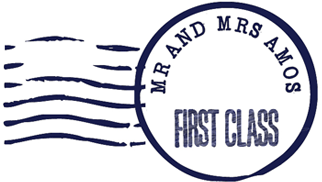The Sick Person Beside You
Striking terror in the heart of every traveller
In light of the new coronavirus, I thought this Luxe Nomad from a few years ago was worth a second look.
The woman sitting next to me on the flight started sniffling as soon as the seatbelt light went off. By mealtime, she seemed to be fighting for every breath. But she was OK when I asked. She merely had a cold.
It’s one of the great gambles of travelling solo that you have no control over who is sitting beside you. That person may be so charming and interesting you spend the whole 14 hours from Los Angeles to Sydney talking to them. Alternately, they may be knee jigglers, nose pickers, snorting snorers or profuse sweaters.
But as annoying as all these habits are, nothing strikes fear in the heart of a traveller as much as a seat companion with a cold or the flu. It’s a lottery, wherever on the plane you sit. Like the rest of us, germs don’t have any objection to being upgraded to the pointy end of the plane. And most airports don’t screen passengers for illness the way they screen us for traces of explosives, Hong Kong airport being one of the exceptions, as they sensibly have temperature detectors to fend off cases of avian flu
If you’re on your way home, catching another person’s virus is a pain, but it doesn’t spoil your holiday. It’s quite a different thing if you’ve just begun your journey. A cold or flu may not be life threatening but it’s a killjoy, and especially bitter if you can only manage a holiday every few years. While the rest of your group heads off for a day’s invigorating hiking through the Alps, you’re stuck on a lumpy bed staring at the knotty pine ceiling or watching endless loops of the same report on CNN.
I’ve been sick many times while travelling and the last occasion was in June when I was in Shanghai. I adore Shanghai. But I don’t adore it from the vantage point of a hotel bed.
Like the rest of us, germs don’t have any objection to being upgraded to the pointy end of the plane.
I’d been travelling beforehand in Europe’s ‘spring’, which this year was more like a Tasmanian winter. I’d been on the Eurostar, in various subways, on planes small and large, so it was inevitable that I was going to be in proximity to sick people. Add to this the incubators that are airport lounges and aircraft cabins and I might as well have just held out my arm and volunteered for a shot of bacteria.
If you like to look on the bright side, as I do, being sick away from home does have some things to recommend it. If you’re staying in a decent hotel, there are concierges on call to bring you medicine and room service to supply bowls of noodle soup and ginger tea. It’s better treatment than I’d get at home. But that’s their job: you’re paying for it. I’ve also been treated with generosity in small hotels and pensions, where my hosts have nurtured me back to health through the kindness of their hearts. It’s not called the hospitality business for no reason.
It would be so much healthier if none of us flew when we were ill, but few are willing to cancel trips for a mere cold, although there’s lots of advice against flying with a congested head. I’ve been guilty of it, so desperate to get home and get treatment that I once flew from Singapore with a bad cold. I was that person that I find so annoying now.
On reflection, I should have worn a facemask, as they do in Asia. The better ones do offer some protection against the transmission of virus through the air. But they’re not commonly used in Western cultures and I’ve often wondered why.
I was in America when the ‘swine flu’ struck a few years ago and people were advised to wear facemasks and sanitise their hands. An enterprising New York company began to market masks that were decorated with bling, to try to make them a fashion item. I’m pretty sure it didn’t succeed.
With the possibility that pandemics will become more common as the world travels more, perhaps it’s time to rethink the facemask. It’s probably unrealistic to expect airlines to police the health of patients, although it might be a good idea if facemasks were offered on board. They’d be more practical than thin socks.
Getting the passenger to wear the mask is still the thing, but a shared sense of social responsibility is likely to be more effective than Swarovski crystals.
